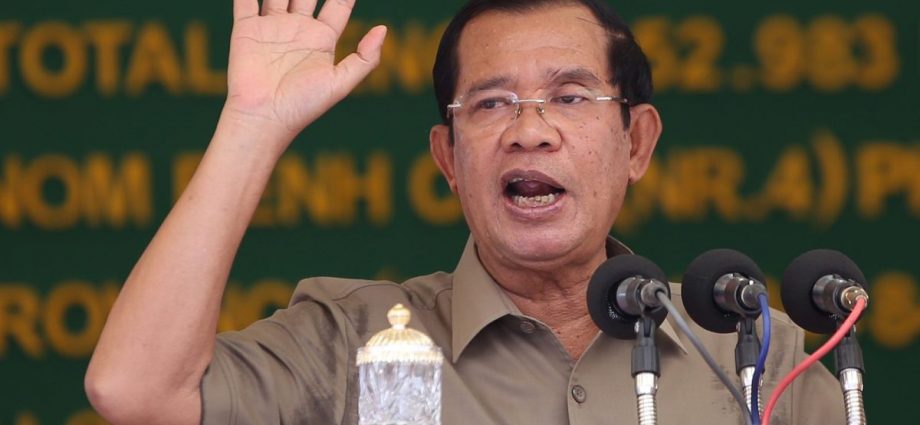Cambodia’s foreign policy is largely shaped by the worldview of Prime Minister Hun Sen, who has more than four decades of practical experience in diplomacy and foreign affairs.
Understanding Cambodian foreign policy, including its decision to co-sponsor the UN resolution to condemn Russia’s invasion of Ukraine, means grasping the pragmatism that informs Hun Sen’s decision-making.
Hun Sen does not buy into the notion of a unipolar world, run by the United States, or a bipolar world order split between Beijing and Washington. He wants to revive the spirit of the non-aligned movement and improve South–South cooperation to form a goodwill coalition against foreign interference and protect the legitimate interests of the developing world.
At the Davos World Economic Forum in May 2022, Hun Sen said that Cambodia was uninterested in taking sides in the US-China rivalry despite mounting pressure from major powers. But he acknowledged that Cambodia faces challenges caused by volatile geopolitical rivalries.
In response to these challenges, Hun Sen supports multilateral initiatives such as the Belt and Road Initiative and Japan’s Free and Open Indo-Pacific — a strategy that promotes regional peace and prosperity without forming alliances against third countries, making it consistent with ASEAN centrality.
As an open and small economy, Cambodia must be connected with the region and the world for its own survival and economic progress. ASEAN acts as a springboard from which Cambodia can connect with the global economy.

ASEAN cushions its members from the effects of foreign intervention, especially from superpowers by emphasizing the non-interference principle and consensus-based decision-making norms.
As the 2022 ASEAN chair, Cambodia is striving to enhance ASEAN unity, centrality and the spirit of cooperation to address emerging challenges facing the region.
Although Cambodia has strong economic and political ties with China, this does not mean it has put all its eggs in one basket. Amid increasing geopolitical and geoeconomic uncertainty, Cambodia increasingly hedges between the United States, China and regional institutions.
Cambodia was the first Southeast Asian country to register its support for the Japan-led “Free and Open Indo-Pacific” — an initiative that Phnom Penh sees as complementary to ASEAN-led regional mechanisms.
During Lieutenant General Hun Manet’s visit to Japan in February 2022, both sides agreed to strengthen defense and security cooperation under the Free and Open Indo-Pacific framework. During the Japanese Chief of Staff’s visit in April 2022, specific areas of cooperation included peacekeeping operations, humanitarian assistance and disaster relief as well as educational exchange.
The Japanese Self Defense Forces and the Royal Cambodian Armed Forces agreed to work more closely together to address challenges in the region in order to realize the vision of a “Free and Open Indo-Pacific.”
Economic diversification is also in full swing. A year after signing a Free Trade Agreement with China in October 2020, Cambodia reached another agreement with the Republic of Korea in October 2021. Cambodia is exploring opportunities to negotiate bilateral trade agreements with other key economic partners such as Japan, India and the Eurasian Economic Union.
While China remains Cambodia’s top investor and trading partner, the United States and the European Union remain the country’s two main export markets — especially for textile products. Cambodia is trying to maintain preferential market access to these two markets without giving up access to Chinese capital and goods markets.
Cambodia intriguingly co-sponsored the March 2022 United Nations resolution to condemn Russia’s invasion of Ukraine, knowing that Russia would take measures to punish Cambodia in response.
Cambodia’s decision was underpinned by their respect for sovereignty and the territorial integrity of an independent state — both foundations of the international rules-based order.
Having been the victim of great power politics during the Indochina wars in which France and the United States were embroiled, Cambodia has bitter experiences in dealing with superpowers. This informs Hun Sen’s determination to not cede to foreign interference in regional politics, particularly when it comes to being pushed into the arms of either China or the United States.
As a pragmatist, Hun Sen minimizes risks by hedging economic relations with the United States, China and Southeast Asia, while maximizing international cooperation by trying to implement “reforming at home and making friends abroad based on independence.”

The ongoing institutional reforms and capacity building of foreign service officers are gaining remarkable results. Diversification strategies have been implemented together with the promotion of open and inclusive multilateralism and a rules-based international order.
Although Cambodia possesses limited material resources and has extensive experience with foreign intervention, it is not entirely without agency. The fluidity of alliances, multiplicity of major powers (China, India, Russia, and the United States) and the increasingly vital roles of regional institutions such as the European Union and ASEAN in the international system means that Cambodia has the strategic space to maneuver.
It can continuously adjust its foreign policy posture to adapt to the fast-changing geopolitical landscape in which there are rising US-China tensions and adverse economic trends.
Maintaining independence and strategic autonomy is an uphill struggle for small states like Cambodia. But remaining non-aligned, despite its strong relations with China, is one way Cambodia can navigate a new era of economic complexity and geopolitical volatility.
Chheang Vannarith is a Lecturer in Public Policy and Global Affairs at Nanyang Technological University and the President of the Asian Vision Institute.
This article was first published by East Asia Forum, which is based out of the Crawford School of Public Policy within the College of Asia and the Pacific at the Australian National University. It is republished under a Creative Commons license.

